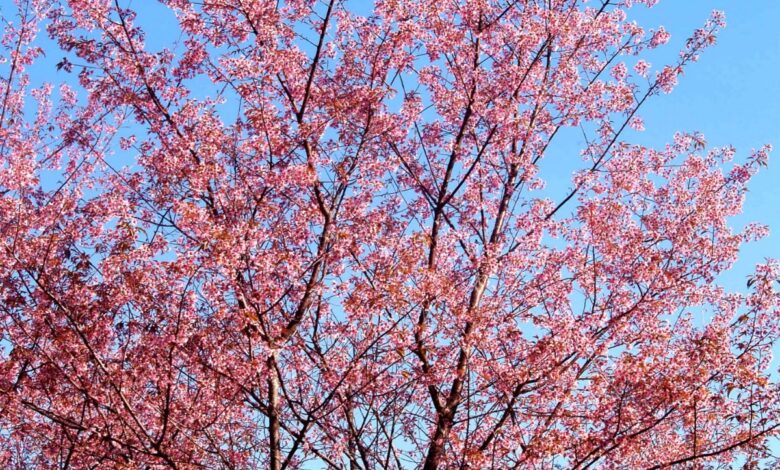Flowering of ‘Buransh’ and ‘Padam’ trees to be celebrated in Himalayas

Flowering of ‘Buransh’ and ‘Padam’ trees to be celebrated in Himalayas
B.D. Kasniyal
Pithoragarh, Sept 9
To raise common awareness about preservation, sustainable use and to celebrate their contribution to Himalayan eco system of ‘Buransh’ (Rhododendron) and ‘Padam’ (Prunus Cerasoides), rare Himalayan fauna species, the research wing of Uttarakhand forest department, has proposed to celebrate a ‘flower week,’ at the time of blooming of these respective species, according to Sanjeev Chaturvedi, Director of research wing at Haldwani.
“The flower week might be organised for ‘Buransh’ in the second week of March,2026 while the flower week for ‘Padam’ would be organised in the second week of October, 2026 when these species remain in peak blooming season,” said Sanjeev Chaturvedi.
The objective to celebrate flowering weeks, are to celebrate seasonal blooming, to raise awareness among local communities and tourists, about ecological and cultural importance of these species in the Himalayan eco system and to document local traditions and folklores related to these species amongst local communities.
“We have also aimed to aware local communities for sustainable harvesting and to mitigate threat to overexploitation of these rare species of Himalayan region,” said Chaturvedi.

‘Buransh’,(rhododendron) grows at 1500-3300 meters, heights of southern slips of Himalayan region, is found from Kashmir to Bhutan in entire Himalayan region besides in China, Myanmar and Thailand.
“When in full bloom ‘Buransh’ tree gives a mesmerising hue to forest and attracts a variety of birds and insects giving further extension to pollination process,” said the forest wing director.
The squash made of flower petals of ‘Buransh’ has high medicinal values as it contains anti-oxident, anti–inflammatory and anti-bacterial properties.
‘Padam’, (Prunus cerasoides) that grown at heights of 1200 – 2400 meters in Himalayan states, has unique phenological traits, as it flowers twice in a year, first in the months March- April and then September- October months of the year. “It has great contribution to forest eco system by providing nectar and pollens to pollinate bees and butterflies,” said the officer.
“Various countries, like Japan and South Korea, celebrate blooming of three species through festivals and dedicated events that honour beauty, ecological significance and cultural symbolism of flowers in their respective communities. We also want to start such traditions to celebrate flowering of significant fauna species of Himalayan forests, to aware people and local communities against over exploitation of these rare boons that nature has bestowed on Himalayan region,” said Sanjeev Chaturvedi .




